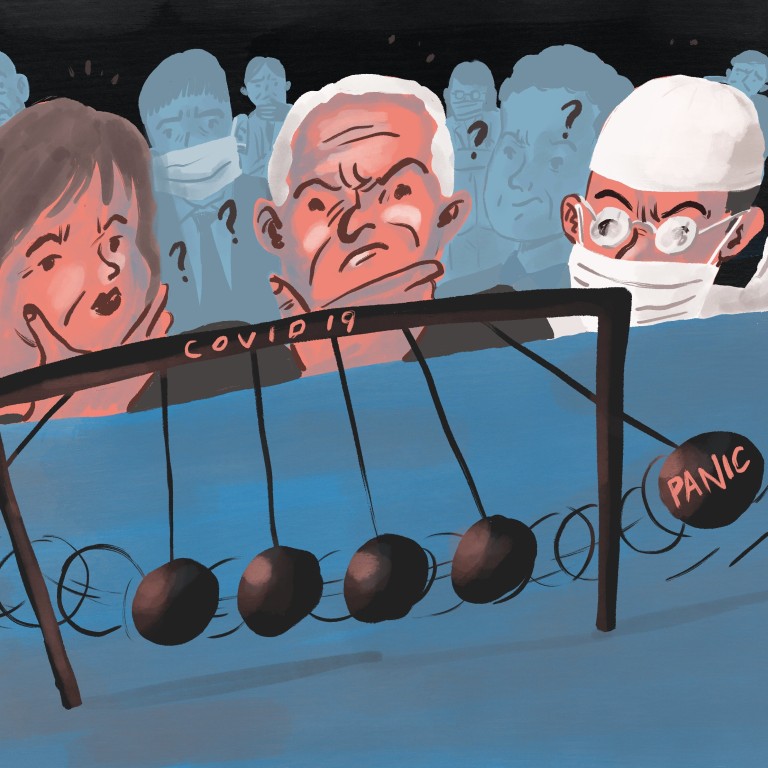
Coronavirus: WHO wants end to ‘panic-then-forget’ approach to epidemics
- Global health body has warned that ‘this may just be a harbinger of what may come’ and governments must prepare for the next crisis
- While a vaccine is the answer, leading medical experts have clashed over how to respond to this kind of public health challenge
This is the first in a series on the Covid-19 disease, one year after it first emerged in the Chinese city of Wuhan. It explores the response to the pandemic and what lessons may be learned as medical science predicts it won’t be the last. Please support us on our mission to bring you quality journalism.
The typical pattern is an infectious disease of some form breaks out, governments and health authorities react with a hodgepodge of policies, disease is brought under control or fades away, world forgets. Repeat.
The deaths of more than 1.5 million people and counting have been attributed to the pneumonia-like illness. Lockdowns to try and stop its spread ran a wrecking ball through world economies, jobs and the social relationships that hold human communities together.
We cannot, cannot, cannot let the world forget, because the next one may not be anything but the worst one
But for Michael Ryan, executive director of the WHO’s Health Emergencies Programme, the start of what looks to be a solution should not become another part of the panic-then-forget cycle. He warns Covid-19 won’t be the last disease outbreak.
“We cannot, cannot, cannot let the world forget, because the next one may not be anything but the worst one,” said Ryan, a medical doctor and specialist in public health and communicable disease control. “This [Covid-19] may just be a harbinger of what may come.”
Ryan made the comments at a United Nations event in October that included public health officials from Finland, France, Indonesia and other country representatives. They echoed his view that governments have to use Covid-19 to learn lessons for dealing with future epidemics.
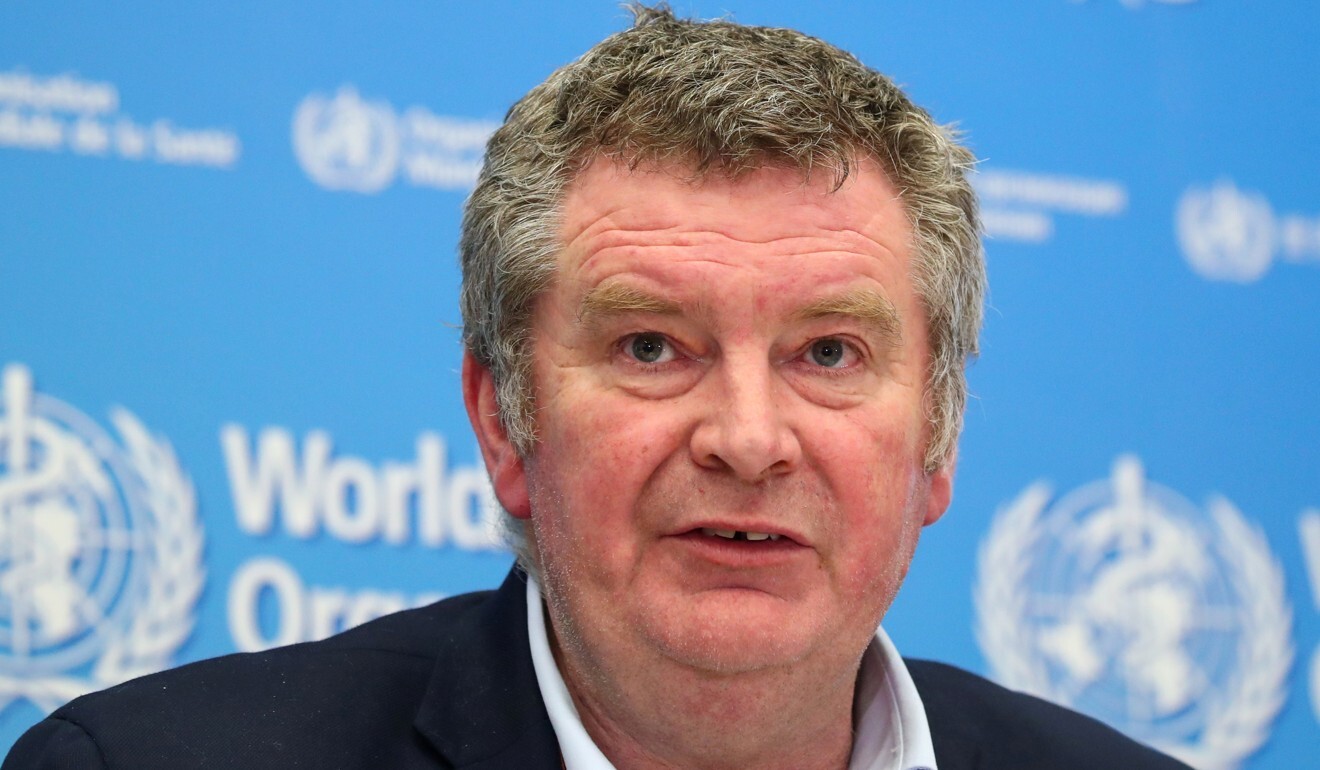
Underpinning this is a body of science that says the doubling of the human population to 7.7 billion in the past 60 years has created increased friction with wildlife habitats in competition for land, water and food. This creates opportunity for animal-borne pathogens to hop to humans and evolve to cause epidemics, just as the virus causing Covid-19 is thought to have done.
Well before this disease arrived, the WHO warned of the increased rate of so-called zoonotic diseases arising in human populations, or those that originated in animals. The health body estimates that 70 per cent of emerging diseases of the past 50 years are zoonotic, explaining why terms such as bird flu, Sars and mad cow disease became conversation topics.
The US$16 trillion virus
As the effectiveness of Covid-19 vaccines are now tested in real-world settings, the call is for commitments by governments and the WHO to prepare for the next potential epidemic.
This could mean review of industrial and agricultural practices, as well as eating, social and lifestyle habits, according to some research. It’s not just about saving lives but protecting livelihoods and those most at risk, invariably the poor, wherever they are.
That was put into another context by two Harvard University economists, who called Covid-19 the US$16 trillion virus.
That is the estimated cumulative financial cost of the Covid-19 pandemic in the US alone, according to an October report in the Journal of the American Medical Association by economists David Cutler and Lawrence Summers.
It’s also larger than the entire US$14.3 trillion annual gross domestic product of China, the world’s second largest economy.
The report argues “the immense financial loss from Covid-19 suggests a fundamental rethinking of government’s role in pandemic preparation”.
Not Trump
But Nobel laureate economist Joseph Stiglitz, writing in an International Monetary Fund publication, said factors behind the large number of Covid-19-related deaths in the United States were in play well before the arrival of Trump as president.
He says the US has among the poorest average health standards of major developed economies and the highest levels of health disparities. Covid-19 disproportionately affects the poor, including the deprived in advanced economies like the US.
“Unfortunately, as bad as inequality had been before the pandemic, and as forcefully as the pandemic has exposed the inequalities in our society, the post-pandemic world could experience even greater inequalities unless governments do something,” Stiglitz said.

Doing something first of all requires figuring out what needs to be done. The WHO’s governing body, which represents 194 countries, has approved an investigation to look into what went right and wrong in the Covid-19 response, from lockdowns and travel restrictions and the lessons learned.
It kicked off in September with a 13-member panel. It will ask questions about “how WHO and national governments could have worked differently knowing what we now know about the disease”, said Helen Clark, panel co-chair and a former prime minister of New Zealand.
The simple answer would seem to be to follow the best recommendations of science.
But as countries faced repeated waves and troughs of Covid-19 infections and scrambled to respond, some of the world’s leading medical specialists clashed over methods to try to stop the spread.
They all agreed a vaccine is the answer, but in the process towards developing one, experts differed over whether the backstop cure – repeated lockdowns – was starting to do as much damage as the disease itself.
Science split
The scientific divide could be summed up in petitions that became known as the Great Barrington Declaration and the John Snow Memorandum, both signed by scores of scientists and doctors and each arguing for different approaches to fighting Covid-19 as the disease spread.
This debate got heated and turned on the issue of achieving “herd immunity”, or the point reached where enough people in a community become immune to a disease that it stops spreading.
The Great Barrington Declaration, named after a town in the US where it was proposed, argues that blanket lockdowns had become part of the problem and were causing enormous collateral damage. Governments should adopt instead what it calls “focused protection” to reach herd immunity.
In summary, it calls for authorities to focus on isolating groups identified as most at risk from Covid-19 – the elderly in nursing homes and people with pre-existing diseases, for example – while allowing others to continue life as normal.
“Of course, if there’s a vaccine, it makes it less costly to get to herd immunity,” said Dr Jay Bhattacharya, a professor at the Stanford University School of Medicine and one of three initial signatories to the Great Barrington proposal.

01:55
Coronavirus vaccine: UK grandmother is first person outside trials to get Pfizer Covid-19 shot
With Covid-19 mortality there is a very steep risk gradient by age, said Bhattacharya, a physician and expert on infectious diseases and vulnerable populations. Based on current studies, people aged under 70 have a 99.95 per cent survival rate, while it is 95 per cent for those over 70, he said.
“That’s the main fact underlying the Great Barrington Declaration” and the call for focused protection for those most at risk, Bhattacharya said.
Dr Martin Kulldorff, professor of medicine at Harvard University and an epidemiologist, or specialist in disease outbreaks, is another founding Barrington signatory. So is Dr Sunetra Gupta, a professor at the University of Oxford and also an epidemiologist.
Despite the heavyweight backing and thousands of signatures, the Great Barrington Declaration was attacked by other medical professionals, with some saying it seemed to be arguing for allowing Covid-19 to spread unimpeded.
WHO director general Dr Tedros Adhanom Ghebreyesus called the strategy advocated by the declaration “unethical”.
Lockdown spat
Many scientists argue that lockdowns are necessary because public health systems would have collapsed without them, unable to cope with a stream of critically ill Covid-19 patients.
“When we looked at the UK and other European countries, you don’t need a very sophisticated infectious disease model to tell you that the epidemic was doubling in size every four days,” said Dr Katharina Hauck, deputy director of the Abdul Latif Jameel Institute for Disease and Emergency Analytics at Imperial College London.
“So it doesn’t take much to calculate by what time the intensive care unit capacity would be breached, and this is what many models showed, so I think this convinced policymakers that a lockdown was the only alternative,” she said.
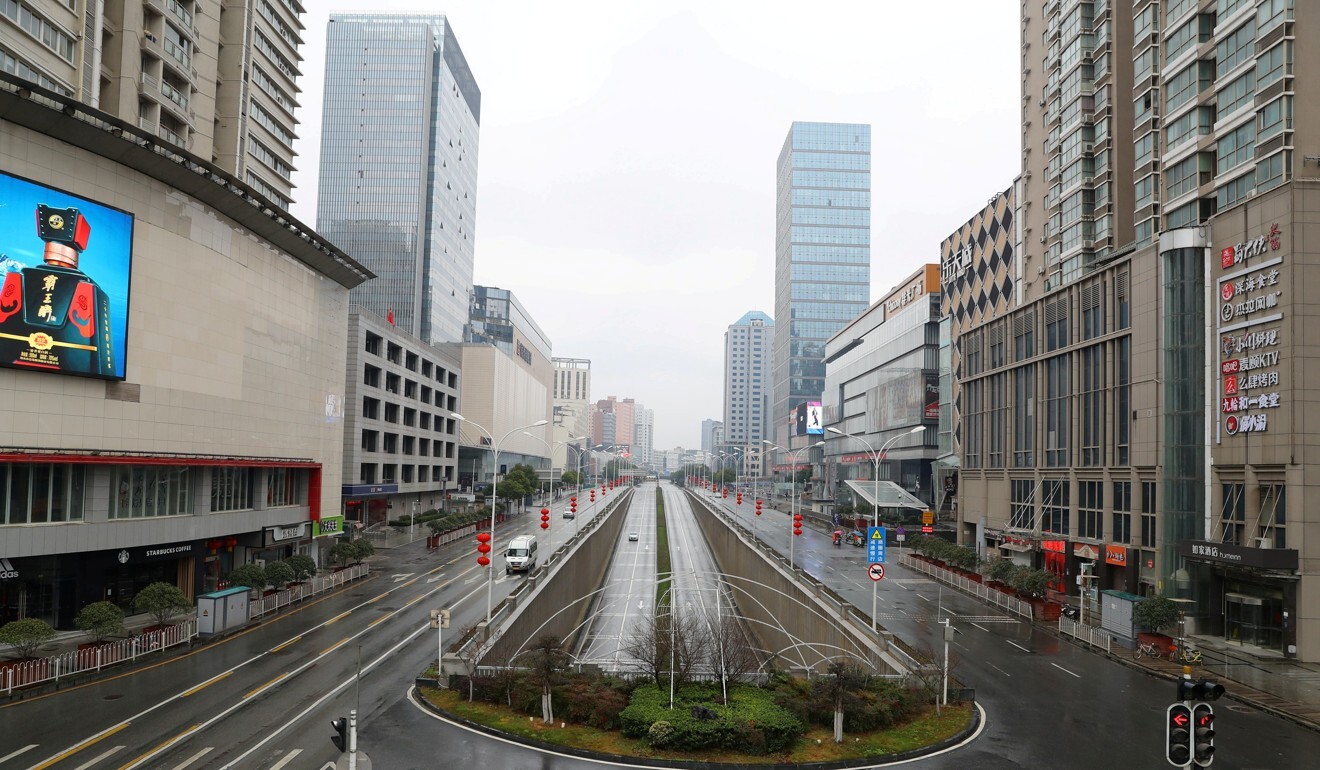
Hauck is part of Britain’s International Comparators Joint Unit to help inform the government about what other countries were doing to handle Covid-19.
She described the Great Barrington Declaration as an “unfortunate publicity stunt” that lacks credibility in scientific and “reasonable” policymaking circles.
The strategy of focused protection could only work if the vulnerable groups were placed on an “island”, she said. Hauck was not alone in her reservations.
On October 14, 10 days after the Great Barrington Declaration was made public, the John Snow Memorandum – named after one of the founders of epidemiology – was published in The Lancet medical journal and was later signed by more than 4,000 scientists.
What was possible in China is not possible in Belgium or the Netherlands or Sweden or the United States
The memorandum says the Barrington approach to allow infection in a low-risk group to protect a high-risk group is a “dangerous fallacy unsupported by scientific evidence”.
Marc Lipsitch, a professor of epidemiology at Harvard University who signed the John Snow Memorandum, did note some agreement between the two petitions.
Both agreed on three points: the pandemic’s impact on the economy has been catastrophic; keeping schools open, especially primary schools, should be a priority; special efforts need to be made to protect vulnerable groups.
A broader question is whether the WHO or any one country can offer a single, prescriptive model for how to deal with the kind of public health challenges thrown up by Covid-19.
China’s tough early measures against the virus – which included locking down as many as 60 million people in Hubei province where Wuhan is located – allowed it to later relax restrictions faster than any other country. But a lockdown resembling China’s proved impossible in most other nations.
Bhattacharya said that China’s success in controlling the virus via lockdowns led many other countries to try and “copy” its approach.
“But what was possible in China is not possible in Belgium or the Netherlands or Sweden or the United States,” he said. “And I think in a way we sort of threw away the existing pandemic plans which didn’t involve lockdowns all around the world,” he said.
Swedish model
Julian Savulescu, a professor of ethics at the University of Oxford, said liberal democracies in the West are unable to severely restrict the liberty of their citizens, even though the success stories of East Asian countries in fighting Covid-19 show that this is justified at times.
He did not sign the Great Barrington Declaration, noting that lockdowns are not inherently bad, it’s the final outcome that counts.
However, Savulescu said that if governments are to respond more effectively to the next pandemic, conducting “experiments in living” were necessary to find better solutions.
Schools for pupils under 16 were kept open, crowds of up to 50 people were allowed, and the evidence behind mask-wearing was questioned by the government’s chief epidemiologist, Anders Tegnell.
While Sweden’s per capita Covid-19 fatalities were higher than its Nordic neighbours, which did use lockdowns, they were lower than countries that resorted to hard lockdowns, such as Italy and Spain.
Since November, however, daily cases have jumped, causing the Swedish prime minister to announce restrictions on bar and restaurant operations and banning public events of more than eight people.
John Snow Memorandum signee Lipsitch said the lesson from Sweden’s Covid-19 response was that it exposed the misconception that “laissez-faire approaches can successfully be paired with good health outcomes”.
Kulldorff at Harvard countered that Sweden, his native country, made the right decision by largely avoiding school closures, but then failed to devote resources to protecting the elderly in nursing homes.
Hauck at Imperial said: “Swedes were very good at adhering to social distance recommendations given by the government.” In other countries, adherence just wasn’t that good, she said.
The costs of locking down are much, much higher [in Africa] ... because the countries are so poor
Rich vs poor
Wealth and geography also matters. Social distancing is easy when living in a country like Sweden with one of the highest GDP per capita in the world, and where 50 per cent of the population have access to a summer cabin, spread over 30 national parks and 270,000 islands.
In most of the developing world, no such luxuries are available.
Bhattacharya’s aversion to lockdowns is driven by his concern for the well-being of children in the developing world.
He points to a July study from the United Nations that said the economic fallout from the Covid-19 pandemic may push 130 million people to the brink of starvation as it breaks food supply chains.
Jonas F. Ludvigsson, paediatrician and professor at Karolinska Institutet in Sweden, manages an intensive care ward at a hospital in Stockholm. He said seven beds, out of the 15 to 20 available, are occupied by Covid-19 patients this week.
He said he signed the Great Barrington Declaration because of the damage lockdowns do in developing regions like sub-Saharan Africa and India, both places where he has worked.
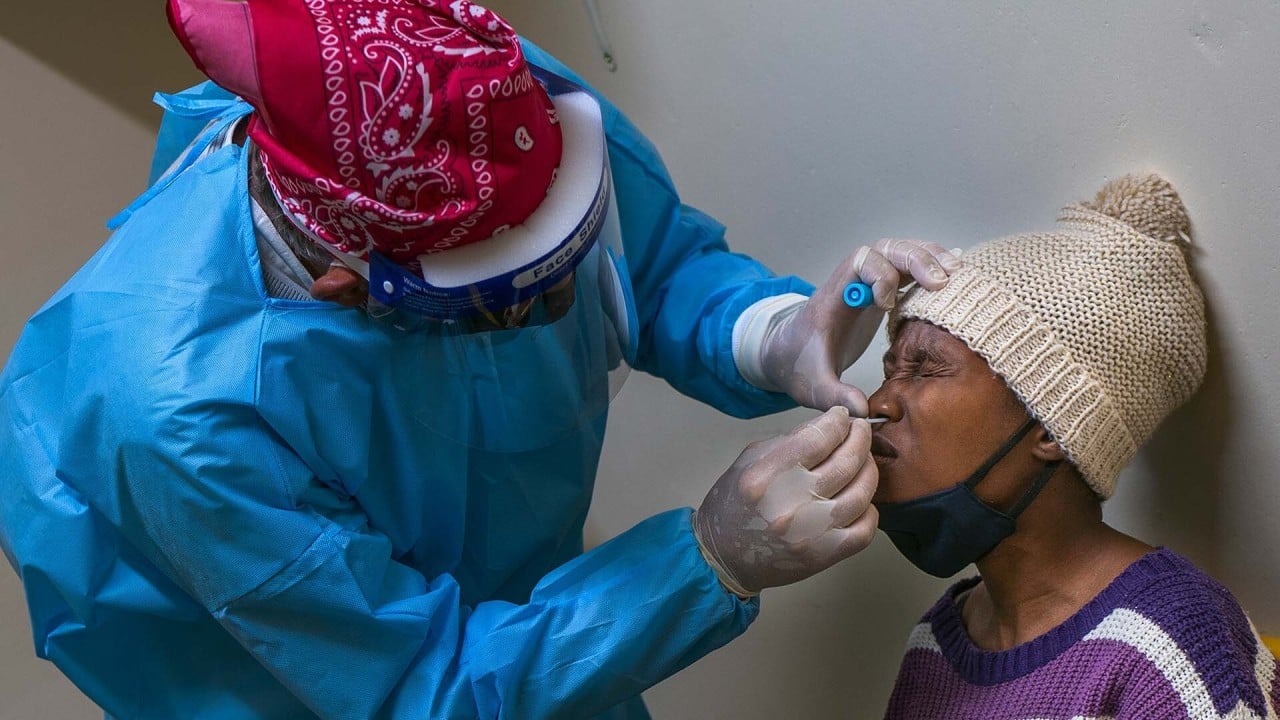
01:58
Coronavirus: South Africa becomes continent’s clear leader in Covid-19 infections
He noted a lack of proportion in the Covid-19 response when compared to other viruses that are much deadlier to children, but are mostly confined to the developing world.
“Under the current extraordinary circumstances we will by the end of this month have hundreds of millions of doses of three vaccines against a disease we did not even know existed less than one year ago,” he said.
“Had we invested this effort in tuberculosis and malaria research, I am 100 per cent convinced these diseases would have been completely eradicated within five years.”
“The costs of locking down are much, much higher, in terms of the economy and the impact on people’s health, because the countries are so poor,” Broadbent said.
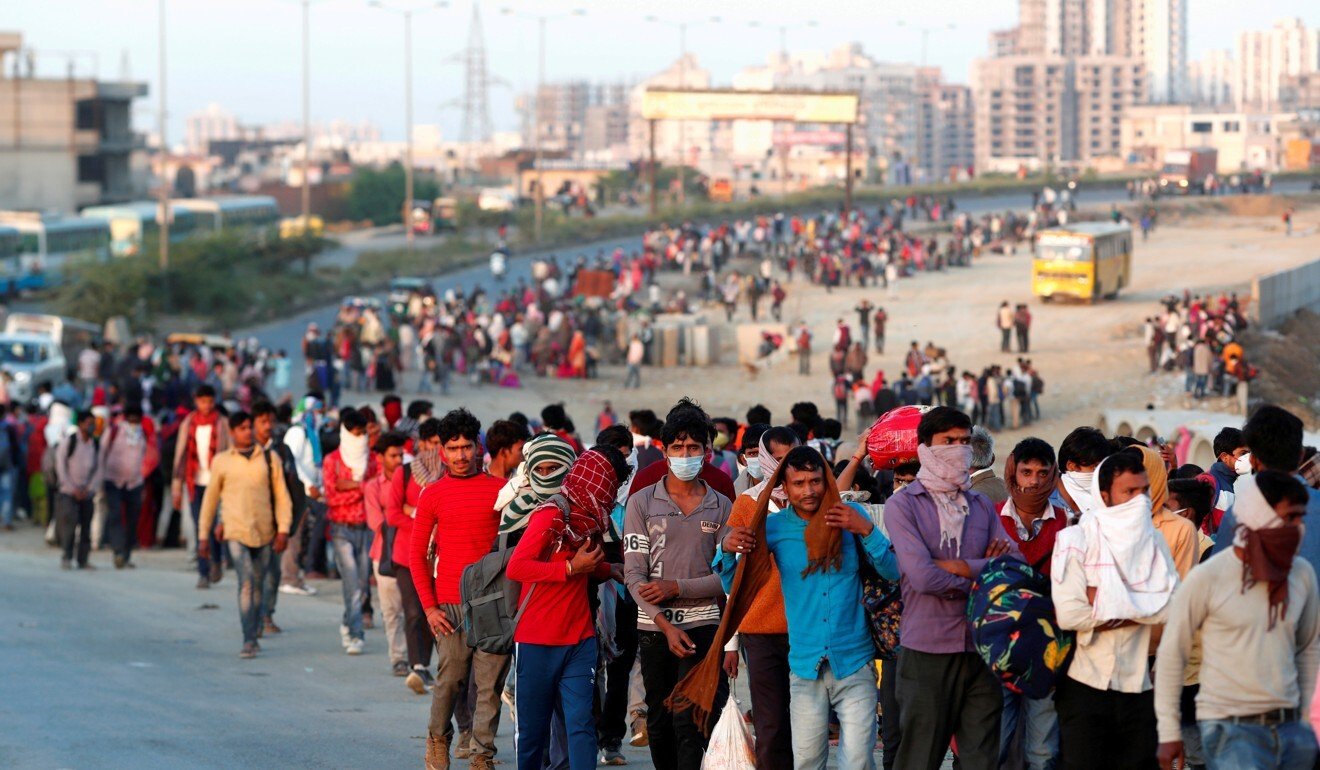
Again, the poor took the brunt. Hawkers and daily wage labourers make up a third of the workforce, but they accounted for three-quarters of the jobs lost in April.
Broadbent said that social distancing and regular handwashing recommended by the WHO are not feasible in poor, highly crowded slums found all over Africa.
These are guidelines “made in Geneva, for Geneva”, he said.
Broadbent co-authored a paper that analysed Covid-19 caseloads from March to September in South Africa and found the infection rate during the hard lockdown was the same as that during the relaxed lockdown.
Yet, in the first months of hard lockdown, 47 per cent of respondents in a national survey said they had no money for food at the end of April, he said.
Dodgy data
Anthony Brookes, professor of genomics and bioinformatics at the University of Leicester, criticised what he calls the British government’s deceptive use of Covid-19 data.
Polymerase chain reaction (PCR) tests, the so-called gold standard of Covid-19 testing, is one issue for Brookes, who says peer-reviewed studies have suggested that up to 30 per cent of PCR tests are inaccurate.
“With false negative rates of 30 to 50 per cent, a negative test gives false and dangerous reassurance to people who are infected and infectious,” Brookes said, adding that clinical symptoms, rather than PCR tests, should be used to determine cause of death in Britain.
“I estimate over half of current Covid-19 deaths [in Britain] would then not be classed as Covid-19 deaths,” he said.
Savulescu at Oxford said that governments need to be transparent about decision making.
“So for example with masks, I’m a pro-mask person, but the evidence is very weak. That’s OK, we can say that the evidence is weak but still tell people to wear them because it’s minimal cost and the benefits are potentially very great, but instead people say they’ve been proven to work,” he said.

01:00
WHO chief warns against politicising coronavirus pandemic as world sees highest weekly case number
The politicisation of the Covid-19 crisis has made it difficult to run international collaborative research.
Imperial College epidemiologist and British government adviser Neil Ferguson said in February that the official Covid-19 case numbers published by China might only make up 10 per cent or less of the real number of infections in the country.
Beijing never responded to that statement and prevents scientists in the mainland from publishing research on Covid-19 without government approval.
This is the opposite of what a March paper written by two Chinese academics, Edward Gu and Li Lantian, said needed to happen for China to better respond to future epidemics.
“In the face of an unknown epidemic outbreak, bureaucratic forces overriding all other social forces, especially scientific and professional communities, inevitably leads to governance failure,” the authors said in the Journal of Chinese Governance.
They noted that by the time the central government recognised the existence of the new infectious disease in Wuhan on January 20, it had been spreading for a month. That could have been avoided if medical staff had been allowed to speak out, they said.
We’re totally ill-equipped to deal with the challenges that we’re going to face this century
What’s next?
It showed the Chinese Centre for Disease Control and Prevention delayed sharing information with the WHO during the first few weeks after the outbreak, citing internal documents and emails. Beijing has not responded to the report.
Trump has also avoided accepting failure to control the spread of the virus, promoting instead the successes of Operation Warp Speed, the US government’s programme to accelerate the development of a Covid-19 vaccine.
Regardless of the blunders by the authorities in China, Hauck at Imperial said that even if Beijing was in full cooperation with the WHO, most of the world was in denial.
“More transparency in January would have been preferable, but to be honest I don’t think it would have changed much about the response of countries.”

03:09
China’s Chengdu city in ‘wartime mode’ after new local Covid-19 infections reported
Even as the WHO warns governments not to fall into the panic-then-forget cycle, its own lack of authority to hold member-states accountable raises questions about its future role in the next epidemic.
The lack of international cooperation in the response to Covid-19 is tragic, both by China and the US, Hauck said.
“WHO is an underfunded bureaucratic organisation who does not have the mandate nor the means to enforce international cooperation in pandemic response,” she said. “We need a stronger mandate for the WHO.”
That was put more bluntly by Savulescu at Oxford, who has written papers arguing that new emerging diseases are a bigger threat than climate change and armed conflicts.
“We’re totally ill-equipped to deal with the challenges that we’re going to face this century, this is actually a pretty puny pandemic ... this is not the Spanish flu, this is not the smallpox, it’s not a virulent form of Ebola,” he said. “This is just a wake-up call for what’s going to happen.”
The second story in the series will look into the WHO’s much-anticipated mission to try to discover the origins of the virus that caused Covid-19 and how and where it made its first microscopic leap into the human body.












